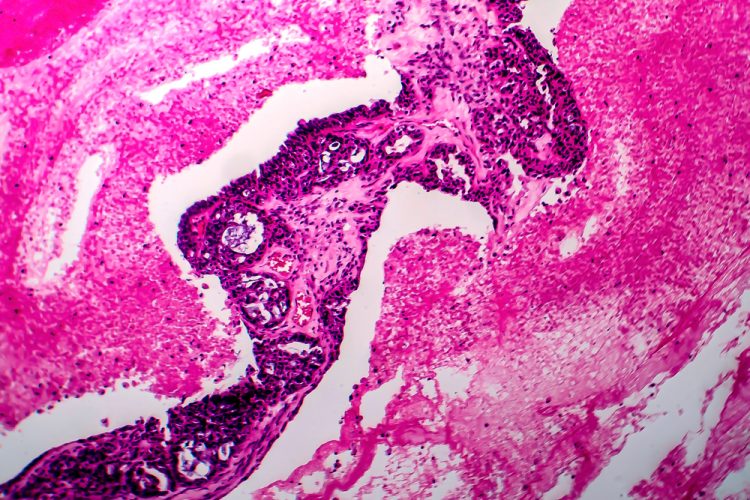Enzyme found to be an “Achilles’ heel” in ovarian cancers
Posted: 2 August 2021 | Anna Begley (Drug Target Review) | No comments yet
Scientists have uncovered the crucial role of the enzyme NMNAT-2 in ovarian cancers, as well as other biomarkers that could lead to treatments.

A team of researchers at the University of Texas (UT) Southwestern, US, have uncovered what appears to be an “Achilles’ heel” in ovarian cancers, as well as new biomarkers that could point to which patients are the best candidates for possible new treatments.
The researchers found that ovarian cancers greatly amplify the enzyme NMNAT-2 that makes NAD+, a substrate for a family of enzymes called PARPS. The team found that one PARP family member, PARP-16, uses NAD+ to modify ribosomes.
One challenge for the study was that a single ADP-ribose group attached to a protein is difficult to detect. The team thus developed a synthetic mono(ADP-ribose) detection reagent comprised of natural protein domains fused together that can be used to detect ADP-ribosylated proteins in cells and patient samples. They screened ovarian cancer patient samples using the mono(ADP-ribose) detection reagent to identify those with high or low levels of mono(ADP-ribose).
“We were able to show that when ribosomes are mon(ADP-ribosyl)ated in ovarian cancer cells, the modification changes the way they translate messenger RNAs (mRNAs) into proteins,” said Professor William Lee Kraus who led the study. “The ovarian cancers amplify NMNAT-2 to increase the levels of NAD+ available for PARP-16 to mono(ADP-ribosyl)ate ribosomes, giving them a selective advantage by allowing them to fine-tune the levels of translation and prevent toxic protein aggregation. But that selective advantage also becomes their Achille’s heels. They are addicted to NMNAT-2, so inhibition or reduction of NMNAT-2 inhibits the growth of the cancer cells.”
The study identified mono(ADP-ribose) and NMNAT-2 as potential biomarkers for ovarian cancers which may allow clinicians to determine which ovarian cancer patients may respond well. More ovarian cancer patients may do well if an inhibitor is developed for PARP-16. “No PARP-16 inhibitors are currently in clinical trials, but labs in academia and the pharmaceutical industry are developing specific and potent inhibitors of PARP-16. Such a drug could be an effective therapeutic for ovarian cancers,” said Kraus.
The study was published in Cell.
Related topics
Biomarkers, Drug Leads, Drug Targets, Enzymes, Molecular Targets, Oncology, Therapeutics
Related conditions
Ovarian cancer
Related organisations
University of Texas Southwestern (UT Southwestern)
Related people
William Lee Kraus







